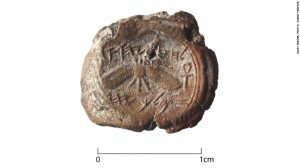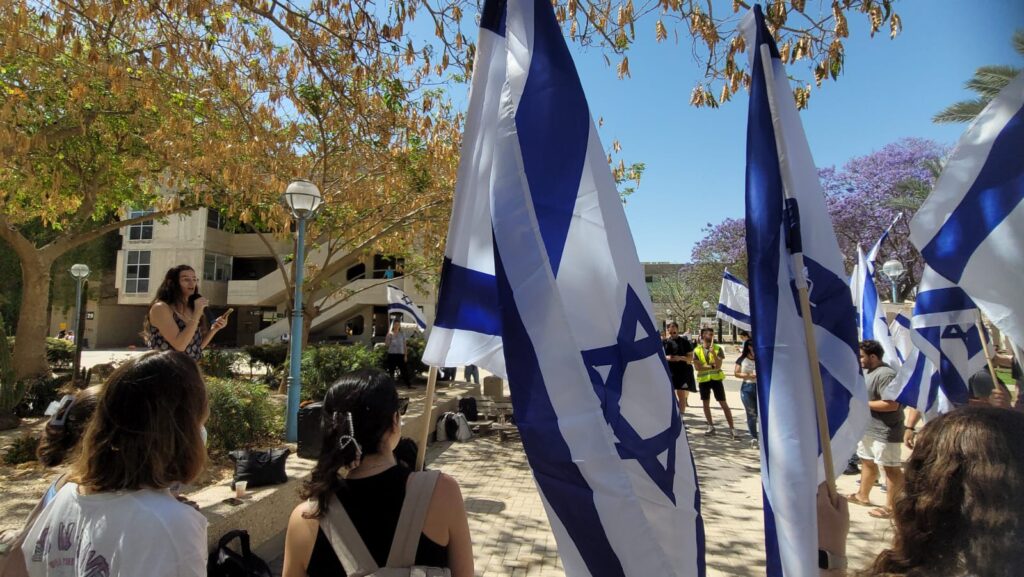
Resolution denies Jewish, Christian ties to Jerusalem and defends terrorism
The Temple Mount, called Har HaBayit in Hebrew and Haram al-Sharif in Arabic, refers to the hill in Jerusalem on which the Jewish First and Second Temple stood in the years 957 – 586 BCE and 516 BCE – 70 CE, respectively. It is the holiest site in the world for Jews. The Al-Aqsa Mosque rests on the Mount and is considered the third holiest site for Muslims, after Mecca and Medina. The Temple Mount also plays a significant role in Christianity, as it is noted in the New Testament as the site of several events in Jesus’s life.

Extensive archaeological evidence ties the Jewish people to this site, including, most famously, the Western Wall in Jerusalem’s Old City and the recently discovered seal of the prominent Biblical King Hezekiah. Aref al-Aref, the Arab mayor of East Jerusalem during the Jordanian occupation of the West Bank wrote in a 1924 pamphlet that the Temple Mount’s “identity with the site of Solomon’s temple is beyond dispute.” There even exists evidence outside of Jerusalem itself: the Arch of Titus that stands in Rome commemorates Titus’s Siege of Jerusalem in 70 CE and depicts the spoils taken from the Jewish Temple in Jerusalem. The Menorah, or golden candelabrum, is its main focus.
The stated mission of the United Nations Educational, Scientific, and Cultural Organization (UNESCO) includes “building intercultural understanding: through protection of heritage and support for cultural diversity” and “protecting freedom of expression.” Additionally, UNESCO boasts that it is “known as the ‘intellectual’ agency of the United Nations” and asserts that “peace must be established on the basis of humanity’s moral and intellectual solidarity.” One would think, therefore, that protecting Jewish ties to the Old City of Jerusalem and supporting the cultural diversity that exists in Jerusalem would fall neatly within UNESCO’s mission.
Recently, however, UNESCO drafted a resolution that is entirely antithetical to this proclaimed purpose and ventures into the absurd for a group that claims to be intellectual, freedom-oriented, and peaceful. The resolution, preliminarily passed on October 12 and approved this Tuesday:
—Ignores historical Jewish ties to the Temple Mount,
—Calls for the safeguarding of an ambiguous “status-quo” that enforces religious discrimination against Jews and Christians, and
—Implicitly justifies the violence that is directed against the people of Israel.
While the resolution claims to affirm the “importance of the Old City of Jerusalem and its Walls for the three monotheistic religions,” the rest of its contents prove otherwise. The resolution never once refers to the location as The Temple Mount and strictly uses the Muslim name, and it puts the name of the surrounding vicinity, the Western Wall Plaza, in quotations. Similarly, the resolution refers to the “so-called ‘Israeli Antiquities’ officials” as if the Israel Antiquities Authority, founded in its original form right after Israel’s re-establishment in 1948, is illegitimate.
Ironically, the resolution “condemns the escalating Israeli… measures against… freedom of worship and Muslims’ access to their Holy Site.” However, it is only forbidden for non-Muslims to pray or make religious displays on the Temple Mount. Access to non-Muslims is restricted to the Mughrabi Gate, which has previously fallen into disrepair and which the UNESCO resolution also claims cannot be renovated by Israel.
More broadly, the resolution calls on Israel to restore the “historic status quo… under which the Jordanian Awqaf (Religious Foundation) Department exercised exclusive authority on Al Aqsa Mosque/Al-Haram Al-Sharif.” Yet it ignores that the status quo of the site has been in flux for a century and suggests that ideally, Muslims would have exclusive rights to pray on the Temple Mount. Meanwhile, non-Muslims would risk arrest, escalating tension, and violence if they even so much as move their lips in a suspicious manner.
Repeatedly, the accusation that Israel violates “the status quo” is used to rationalize terrorism. Notably, Yassar Arafat used Ariel Sharon’s visit to the Temple Mount as reason to instigate the Second Intifada, in which Palestinian terrorists killed over 1,000 Israeli citizens. The day after Sharon’s visit, the Palestinian Authority’s official radio station sent out calls “to all Palestinians to come and defend the al-Aqsa Mosque.”
To this day, Mahmoud Abbas, President of the Palestinian Authority, instigates violence by claiming Jewish desecration of the Temple Mount and Jerusalem. Starting last fall, Israel saw an increasing number of knife attacks by Palestinian terrorists. Abbas encouraged this “Stabbing Intifada,” stating that “Every drop of blood spilled in Jerusalem is pure, every martyr will reach paradise… The Al-Aqsa Mosque is ours. The Church of the Holy Sepulchre is ours as well. [Jews] have no right to desecrate the mosque with their dirty feet.” Attacks continue over a year later, with a foiled suicide bombing attempt and a stabbing attack in Jerusalem occurring just last week.
The UNESCO resolution contributes to hostile efforts like those of Arafat and Abbas. Providing internationally backed “evidence” that Jews and Christians have no ties to the Temple Mount grants legitimacy to the artificial status quo that is repeatedly tied to terrorist acts. The UNESCO resolution “Deeply deplores the new cycle of violence, going on since October 2015, in the context of the constant aggressions by the Israeli settlers and… also asks the Israeli authorities to prevent such aggressions.”
Yet absolutely no blame is assigned to the Palestinian leadership’s calls to violence and the actions of individual terrorists. By reinforcing the idea that Jewish presence on the Temple Mount somehow justifies violence, the resolution makes the belittling, dangerous, and incorrect implication that Palestinians cannot be expected to refrain from terror if provoked by others’ prayer.
The resolution also stresses “the urgent need of the implementation of the UNESCO reactive monitoring mission.” However, Israel and Jordan both agreed to a proposal, worked on by U.S. Secretary of State John Kerry, to install security cameras to monitor the Temple Mount to defend or refute claims made by all parties. It was due to Palestinian pressure the Jordanians reneged on the agreement.
Multiple Israeli and U.S. officials from across the political spectrum have condemned the UNESCO resolution. After Israel cut ties to the U.N. cultural agency on October 14 in protest, UNESCO Director-General Irina Bokova issued a statement about the agency’s dedication to “peace and dialogue,” asserting that “To deny, conceal or erase any of the Jewish, Christian or Muslim traditions undermines the integrity of the site.” However, Bokova did not even address the divisive resolution explicitly in her response. The Palestinian Authority, meanwhile, commended the member-states’ decision to “uphold the principles upon which UNESCO was founded.”
Until the resolution is repealed, the Director-General’s words are meaningless. UNESCO has demonstrated that the principles it actually stands for are sophistry, revisionist history, discrimination, and terror.
Originally published in The Tech.
Contributed by MIT CAMERA Fellow Suri Bandler.

